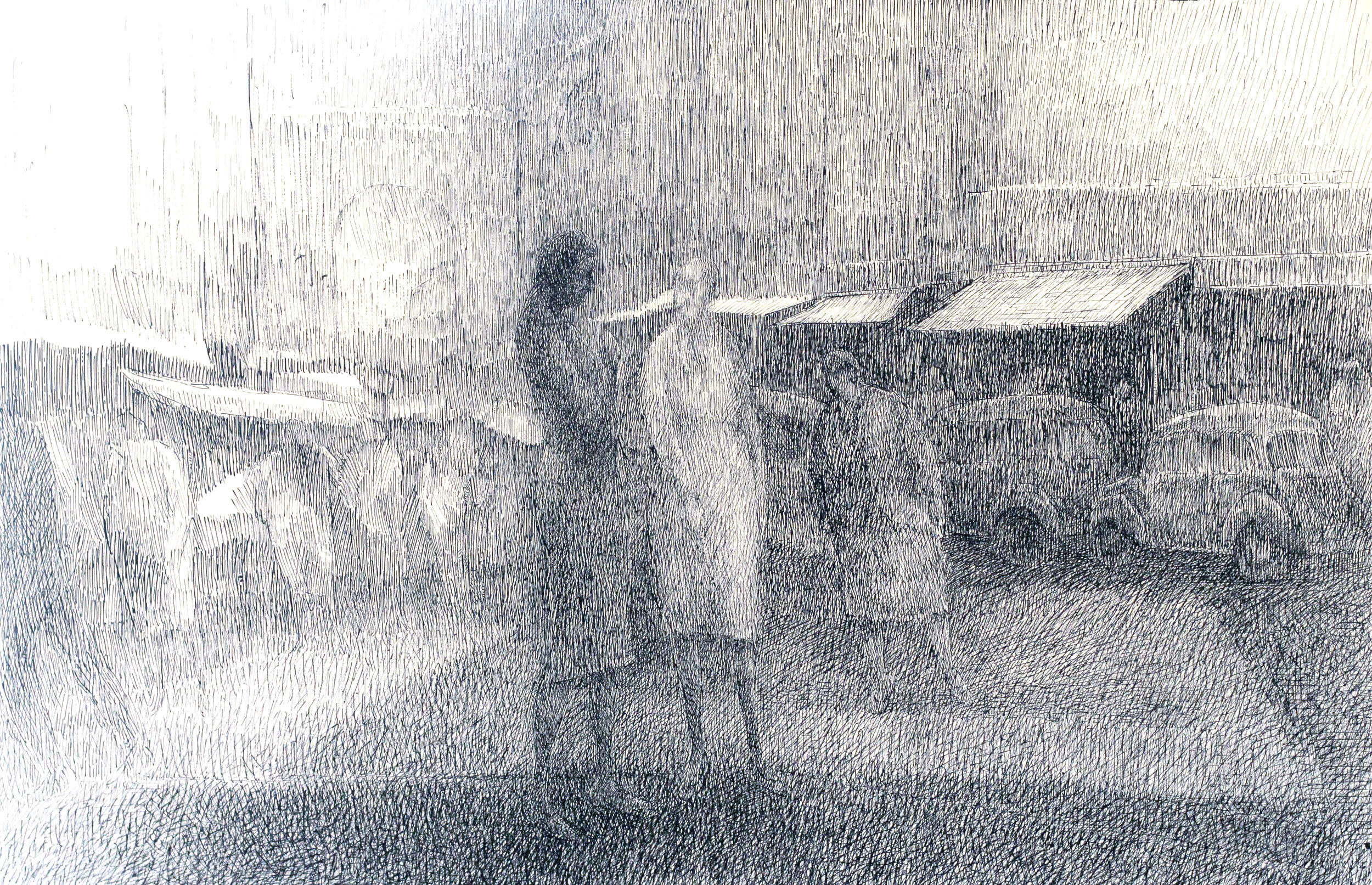Painting & Drawing
Although Altman is primarily known for his prints and etchings, his collection includes hundreds of paintings and drawings as well.
In 1961, he was awarded the first of two Guggenheim Fellowships to pursue a study on drawing. In his application, he wrote, "For years I have devoted most of my creative efforts to drawing. I have long regarded drawing as a full fledged art form. I think of drawing not only as a means to an end, but as an end in itself." Altman's respect for the craft of drawing set the groundwork for his decades of success as a printmaker. His line drawings, most of which were done in the 1950s and 1960s, show the emergence of a technique that would evolve into his signature style as a printmaker.
Altman’s career was bookended by his practice as a painter. As a young artist in the 1940s and 1950s, he worked primarily in oils. In his later years, he returned to painting – though this time using watercolors – producing more than 200 unique watercolor images in the final five years of his life.
While Altman’s paintings and drawings exist as an important part of his artistic canon, he never hesitated to make his preference for printmaking known. “When I’m working with unique works of art, such as drawing and painting exclusively, the very fact that a very beautiful thing that I’ve done suddenly disappeared from sight and I never saw it again, and probably no one else saw it again except that particular collector, is sad,” said Altman. “But with the graphic image, I can have 150 of these works which can reach a wide audience. The original print is a very democratic kind of distribution of art.”



